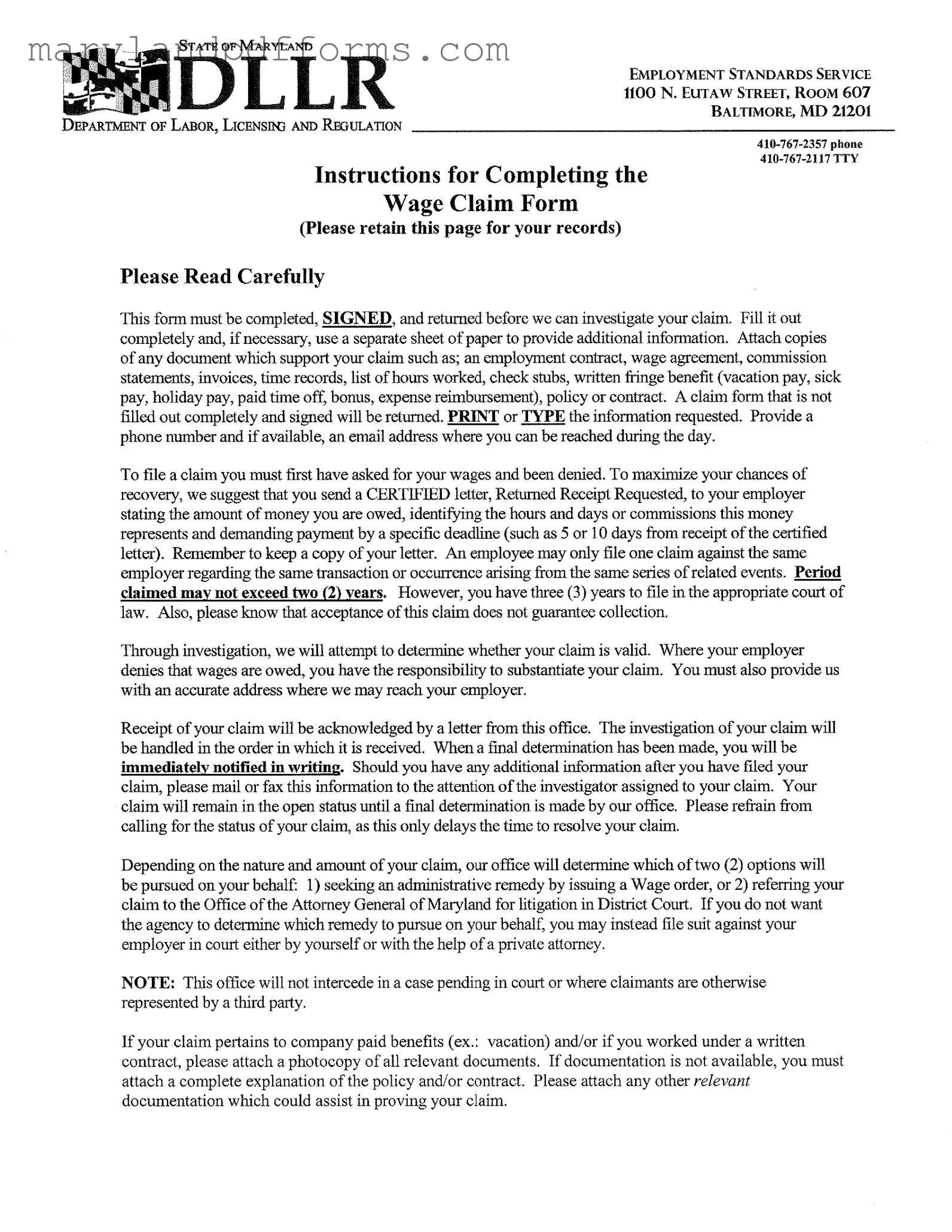Blank Maryland Wage Claim Template
The Maryland Wage Claim form is a crucial document for employees seeking to recover unpaid wages from their employers. This form must be completed and submitted to the Maryland Department of Labor, Licensing and Regulation to initiate an investigation into your claim. If you believe you are owed wages, take the first step by filling out the form below.
Fill Out Maryland Wage Claim Now
